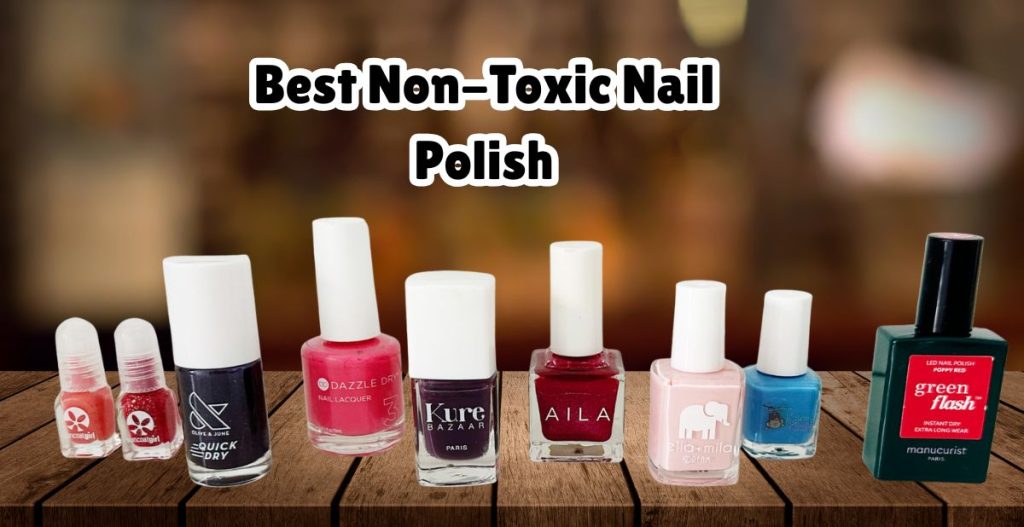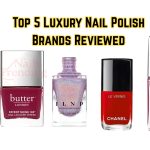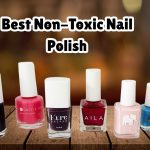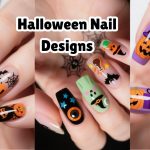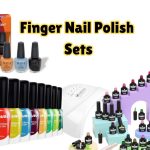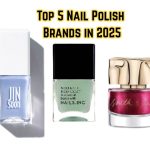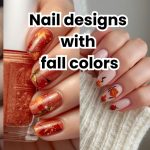As an Amazon Associate I earn from qualifying purchases.
If you’re looking for nail polish that looks fabulous and avoids potentially harmful ingredients, you’re in the right place. More beauty brands today are offering formulations labelled “6-free”, “10-free”, or even higher, indicating the omission of certain toxic chemicals. But as you’ll read below, navigating the world of non-toxic nail polish takes a little more than just spotting a label.
What “Non-Toxic” Nail Polish Means
When you see nail polish labelled “non-toxic” or “clean,” it generally refers to formulations that exclude certain chemicals historically used in nail coatings that may pose health risks.
Definitions and Free-Labels
- 3-Free: Removes the “big three” – formaldehyde, toluene, and dibutyl phthalate (DBP).
- 5-Free: Eliminates additional problematic ingredients such as formaldehyde resin and camphor.
- 7-Free / 10-Free / 12-Free: These go further by excluding more substances like xylene, ethyl tosylamide, parabens, TPHP (triphenyl phosphate) and even animal-derived ingredients.
Why It Matters
Traditional nail polish formulas often contained solvents and plasticizers that could impact nail health, emit fumes, or in cases of heavy salon exposure, pose risks to technicians. For example, toluene has been linked with nervous-system and reproductive concerns.The concept of “non-toxic” isn’t scientifically perfect—no polish is totally chemical-free—but the aim is safer, cleaner formulations.
Important Caveat
Even when labelled “10-free” or similar, the term isn’t regulated across the board, and substitutes may also include less researched chemicals. A study found that some “free” labelled polishes still contained compounds with potential toxicity. So, you’ll want to combine label checks with ingredient awareness.
Key Ingredients to Avoid
When shopping for a non-toxic nail polish, here are chemicals to keep an eye out for — and ideally avoid:
- Formaldehyde: A known human carcinogen, sometimes used as a preservative or hardener.
- Toluene: A solvent that aid pigment dispersion but can affect the nervous system.
- Dibutyl Phthalate (DBP): A plasticizer with possible reproductive system effects.
- Formaldehyde resin: Used for durability, but can cause allergic reactions.
- Camphor: At high concentrations may cause dizziness or nausea; used to prevent cracking.
- Xylene / Ethyl Tosylamide / TPHP / Parabens: Additional chemicals increasingly excluded in “10-free” and above formulas.
By choosing a polish labelled “7-free” or higher, you’re likely avoiding most of these. But again: check the full ingredients list wherever possible.
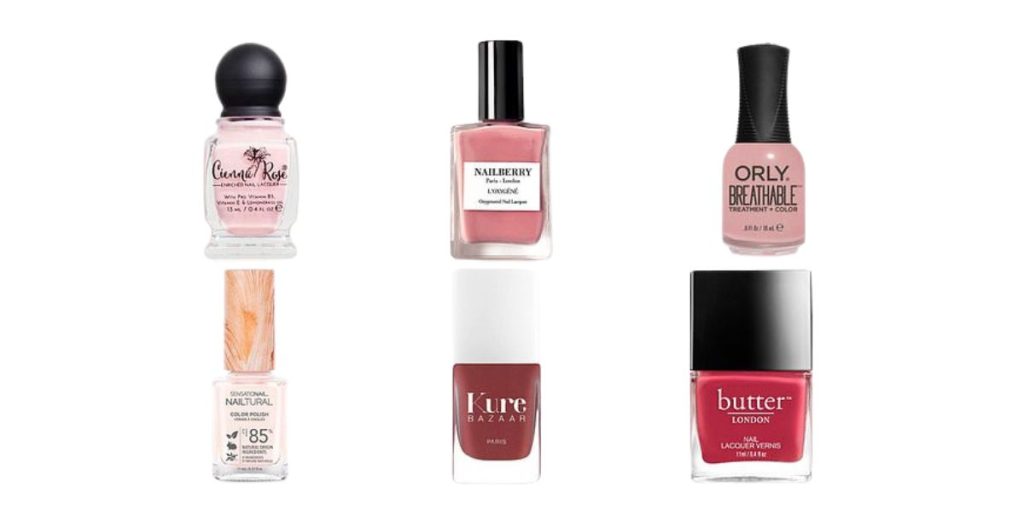
BUY NOW
What to Look For in a Truly Safer Nail Polish
Here are features and certifications you should evaluate when selecting non-toxic nail polish:
Certifications & Ethical Claims
Look for marks like EWG Verified, Leaping Bunny (cruelty-free), vegan, or organic. These aren’t guarantees of complete safety, but they add credibility.
Label Claims & Transparency
- Does the bottle or website clearly state “5-free”, “10-free”, etc?
- Are full ingredient lists easy to find?
- Are there transparency statements about what’s not included?
Formulation Quality
- Good pigment payoff and durability can offset the need to recoat often (less exposure).
- Low odor, minimal fumes are desirable.
- If base & top coats are recommended, that might improve wear and reduce risk of chipping.
Ethical & Environmental Considerations
- Vegan and cruelty-free formulas avoid animal-derived ingredients and testing.
- Clean beauty brands often adopt better packaging, shipping, and sustainability practices.
Real-World Wear
Non-toxic doesn’t mean low-performance. Many newer polishes offer parity with traditional formulas in wear time and finish.
Pros & Cons of Non-Toxic Nail Polishes
Pros
- Reduced exposure to certain risk chemicals (fumes, solvents)
- Aligns with clean-beauty or ethical lifestyles
- Often vegan and cruelty-free
- Many newer formulations offer strong wear and aesthetic quality
Cons
- Premium price: many non-toxic polishes cost more
- Still chemical-based: “non-toxic” isn’t the same as “chemical-free”
- Some finishes may require more coats or special top/base products
- Labels like “10-free” vary in regulation and meaning across brands
- Availability might be limited in certain regions (import/shipping)

BUY NOW
Practical Tips for Use & Purchase
- Use a good base coat and top coat, especially for longevity.
- Paint your nails in a well-ventilated space to avoid fumes.
- Avoid applying too thick coats—thin coats dry better and last longer.
- Store your polish upright in a cool, dark place.
- When trying a new brand, test one favorite shade first.
- Check ingredient lists, especially if you have sensitivities or allergies.
- Remember that even “safe” polishes still require safe removal—avoid harsh removers and over-filing.
FAQs
1. What does “non-toxic” nail polish really mean?
“Non-toxic” nail polish refers to formulas that eliminate certain harmful chemicals—like formaldehyde, toluene, and DBP—commonly used in traditional nail polishes. Depending on the label (like “5-free” or “10-free”), more ingredients may be excluded for safety and cleaner beauty.
2. What’s the difference between 3-free, 5-free, 7-free, and 10-free?
- 3-Free: No formaldehyde, toluene, or dibutyl phthalate (DBP).
- 5-Free: Also removes formaldehyde resin and camphor.
- 7-Free / 10-Free: Excludes even more, like xylene, parabens, and TPHP.
The higher the number, the more potentially harmful chemicals are left out.
3. Are “free-from” nail polish labels regulated?
No. The “3-free,” “5-free,” or “10-free” labels aren’t standardized or regulated. Always check the full ingredient list and brand transparency to ensure you’re truly buying a safer formula.
4. Can non-toxic nail polish last as long as regular polish?
Yes, many high-quality non-toxic nail polishes now match or even exceed the performance of traditional formulas—especially when paired with a good base and top coat.
5. Is non-toxic nail polish completely chemical-free?
No polish is completely chemical-free, as pigments and binders are still necessary. “Non-toxic” simply means the formula avoids ingredients with known or suspected health risks.
6. Are non-toxic nail polishes vegan and cruelty-free?
Many are! Look for certifications like Leaping Bunny, PETA-approved, or vegan to ensure your polish aligns with ethical and cruelty-free beauty standards.
7. Are non-toxic nail polishes safe for pregnant women?
Generally, yes—because they eliminate harsher fumes and chemicals. Still, it’s smart to apply polish in a well-ventilated space and consult a healthcare provider if you have specific sensitivities.
8. How can I make non-toxic nail polish last longer?
Use thin coats, allow each layer to dry, and seal with a quality top coat. Avoid hot water immediately after application and use gloves when cleaning to preserve your manicure.
9. What’s the best way to remove non-toxic nail polish?
Opt for acetone-free removers that use gentler solvents like soy or ethyl lactate. These minimize drying and reduce exposure to strong fumes.
10. Where can I buy non-toxic nail polish?
You can find them online (Amazon, brand websites like Zoya, Ella+Mila, or Tenoverten) and in beauty retailers such as Ulta, Sephora, or Target in the U.S.
Conclusion
Choosing a non-toxic nail polish means blending performance, ingredient safety, and personal values. While no polish is completely “risk-free,” by prioritizing brands that exclude the well-known harmful chemicals, offer transparency, and deliver quality wear, you can enjoy beautiful nails with greater peace of mind.
Focus on:
- Understanding what “free” labels mean
- Checking full ingredient lists and certifications
- Using techniques that extend wear
- Accepting that sometimes you’ll pay a bit more for cleaner formulations
In the world of nail color, you don’t have to sacrifice style to choose safer. With the right polish and method, your nails can look fantastic—and you can rest easy knowing you opted for a cleaner formula.
Amazon and the Amazon logo are trademarks of Amazon.com, Inc, or its affiliates.

